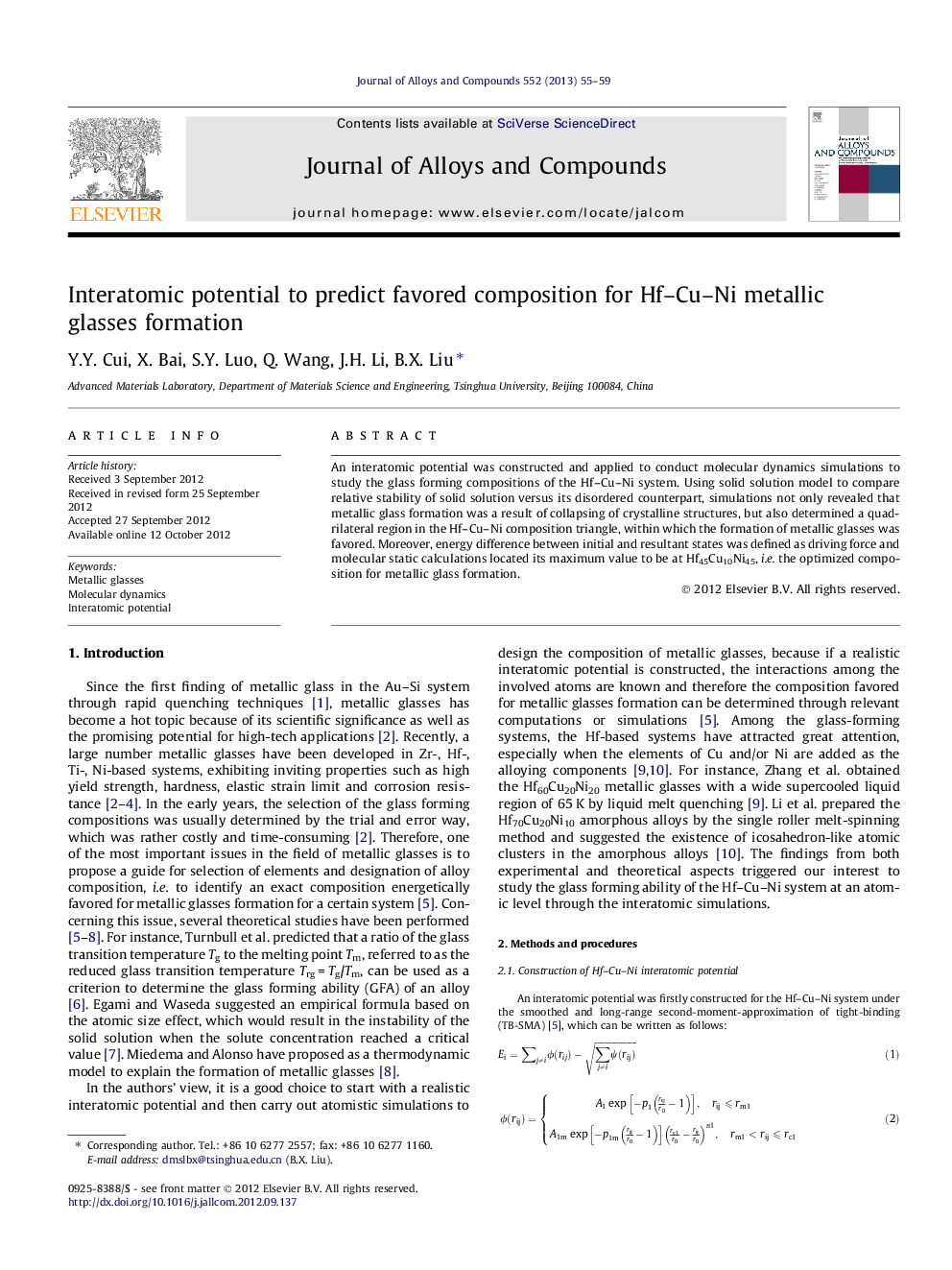| Article ID | Journal | Published Year | Pages | File Type |
|---|---|---|---|---|
| 1614790 | Journal of Alloys and Compounds | 2013 | 5 Pages |
An interatomic potential was constructed and applied to conduct molecular dynamics simulations to study the glass forming compositions of the Hf–Cu–Ni system. Using solid solution model to compare relative stability of solid solution versus its disordered counterpart, simulations not only revealed that metallic glass formation was a result of collapsing of crystalline structures, but also determined a quadrilateral region in the Hf–Cu–Ni composition triangle, within which the formation of metallic glasses was favored. Moreover, energy difference between initial and resultant states was defined as driving force and molecular static calculations located its maximum value to be at Hf45Cu10Ni45, i.e. the optimized composition for metallic glass formation.
► An interatomic potential was constructed for the Hf–Cu–Ni system. ► Molecular dynamics simulations determined a quadrilateral glass-forming region. ► Molecular static calculations located optimized composition at Hf45Cu10Ni45.
